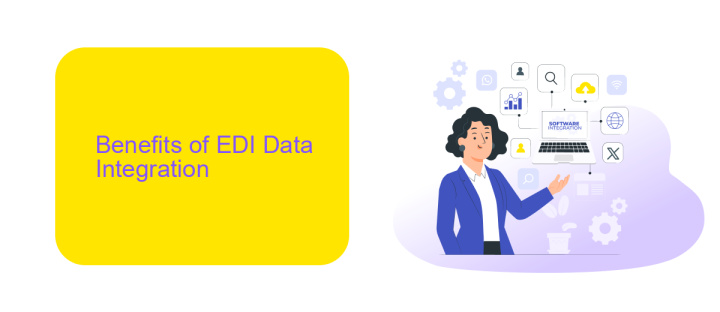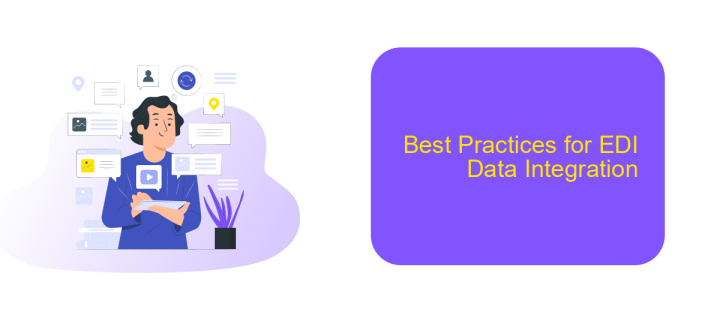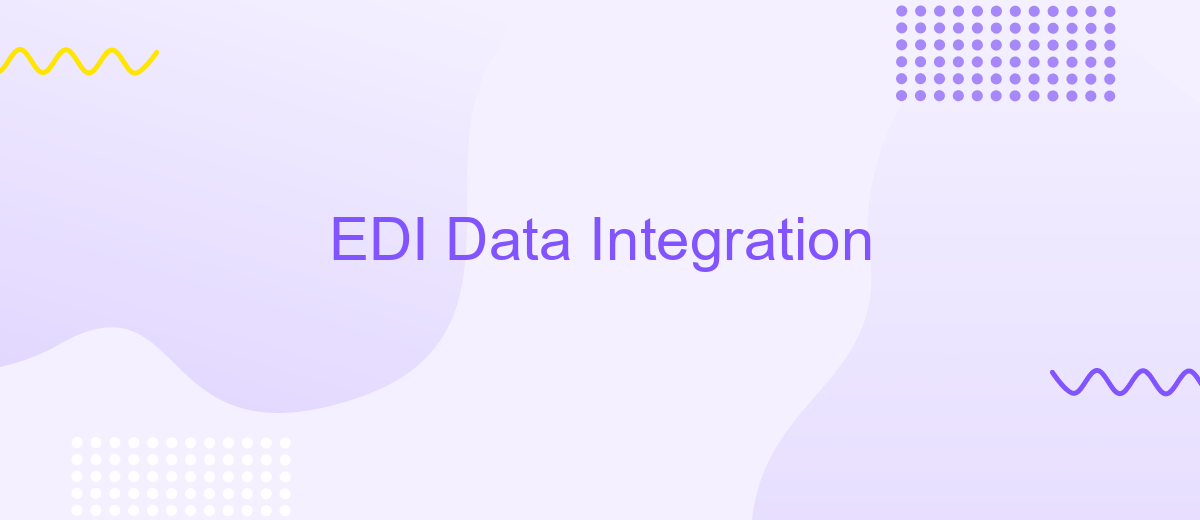EDI Data Integration
Electronic Data Interchange (EDI) data integration is revolutionizing the way businesses communicate and share information. By automating the exchange of documents between trading partners, EDI streamlines processes, reduces errors, and enhances efficiency. This article explores the key benefits, challenges, and best practices for implementing EDI data integration in modern enterprises, ensuring seamless and secure data flow across various systems.
Introduction
Electronic Data Interchange (EDI) Data Integration is a critical component in modern business operations, facilitating seamless communication and data exchange between different systems and organizations. By automating data transfers, EDI eliminates manual entry errors, reduces processing time, and enhances overall efficiency.
- Streamlined business processes
- Reduced operational costs
- Improved data accuracy
- Enhanced partner relationships
One of the efficient ways to set up EDI Data Integration is through specialized services like ApiX-Drive. ApiX-Drive offers an intuitive platform that allows businesses to easily configure and manage their EDI integrations without extensive technical knowledge. This service supports a wide range of applications and systems, ensuring that data flows smoothly and securely across different platforms. By leveraging such tools, companies can focus on their core activities while ensuring their data integration needs are met effectively.
Benefits of EDI Data Integration

Implementing EDI (Electronic Data Interchange) data integration brings numerous benefits to businesses. Firstly, it significantly improves efficiency by automating the exchange of documents and data between trading partners. This automation reduces manual data entry, minimizes human errors, and speeds up transaction processing. Consequently, businesses can achieve faster order processing, reduced lead times, and enhanced customer satisfaction. Additionally, EDI integration ensures data accuracy and consistency, which is crucial for maintaining reliable business operations and compliance with industry standards.
Moreover, EDI data integration enhances supply chain visibility and collaboration. By providing real-time data exchange, businesses can monitor inventory levels, track shipments, and manage orders more effectively. Services like ApiX-Drive can simplify the setup and management of EDI integrations, offering a user-friendly platform to connect various systems and applications seamlessly. This not only reduces the complexity and cost of integration but also allows businesses to scale their operations efficiently. Overall, EDI data integration is a strategic investment that drives operational excellence and competitive advantage.
Challenges of EDI Data Integration

EDI data integration presents several challenges that organizations must address to ensure smooth and efficient operations. These challenges can hinder the seamless exchange of information between various systems and trading partners, leading to potential disruptions and inefficiencies.
- Data Standardization: Different organizations may use varying EDI standards, making it difficult to achieve uniform data exchange.
- System Compatibility: Legacy systems often lack the ability to integrate with modern EDI solutions, necessitating costly upgrades or replacements.
- Security Concerns: Ensuring the secure transfer of sensitive information is paramount, requiring robust encryption and compliance with data protection regulations.
- Scalability: As businesses grow, their EDI systems must scale accordingly, which can be challenging without flexible integration solutions.
- Complexity of Integration: Setting up and maintaining EDI integrations can be complex and resource-intensive, often requiring specialized knowledge.
To mitigate these challenges, businesses can leverage integration platforms like ApiX-Drive, which simplify the process of connecting various systems and automating data exchanges. ApiX-Drive offers a user-friendly interface and supports multiple EDI standards, ensuring compatibility and scalability. Additionally, it provides robust security features to protect sensitive data, making it a valuable tool for overcoming the complexities of EDI data integration.
Best Practices for EDI Data Integration

Effective EDI data integration is crucial for seamless business operations and improved efficiency. To achieve this, it's important to follow best practices that ensure accurate and timely data exchange between systems.
Firstly, ensure that your EDI system is compatible with your trading partners' systems. This involves regular updates and adherence to industry standards. Secondly, invest in a reliable integration service like ApiX-Drive, which simplifies the process of connecting various applications and automates data workflows.
- Standardize data formats and communication protocols.
- Regularly monitor and audit data exchanges for discrepancies.
- Implement robust security measures to protect sensitive information.
- Utilize integration platforms like ApiX-Drive for efficient data management.
By following these best practices, businesses can ensure that their EDI data integration is both efficient and secure. Leveraging tools like ApiX-Drive can significantly reduce manual efforts, minimize errors, and enhance overall data accuracy, leading to better decision-making and operational success.


Conclusion
In conclusion, EDI data integration plays a pivotal role in streamlining business processes, enhancing data accuracy, and reducing operational costs. By automating data exchanges between different systems, companies can achieve higher efficiency and improve collaboration with their partners. The implementation of EDI integration requires careful planning and the right tools to ensure seamless communication and data integrity.
Tools like ApiX-Drive offer a comprehensive solution for setting up EDI integrations, simplifying the process for businesses of all sizes. With ApiX-Drive, companies can easily connect their existing systems, automate workflows, and monitor data exchanges in real-time. This not only saves time and resources but also minimizes the risk of errors, ensuring that businesses can focus on their core activities. As the digital landscape continues to evolve, leveraging robust EDI integration solutions will be essential for maintaining a competitive edge and driving growth.
FAQ
What is EDI Data Integration?
How does EDI Data Integration benefit businesses?
What types of documents can be exchanged using EDI?
How can businesses implement EDI Data Integration?
Is EDI Data Integration secure?
Time is the most valuable resource in today's business realities. By eliminating the routine from work processes, you will get more opportunities to implement the most daring plans and ideas. Choose – you can continue to waste time, money and nerves on inefficient solutions, or you can use ApiX-Drive, automating work processes and achieving results with minimal investment of money, effort and human resources.

